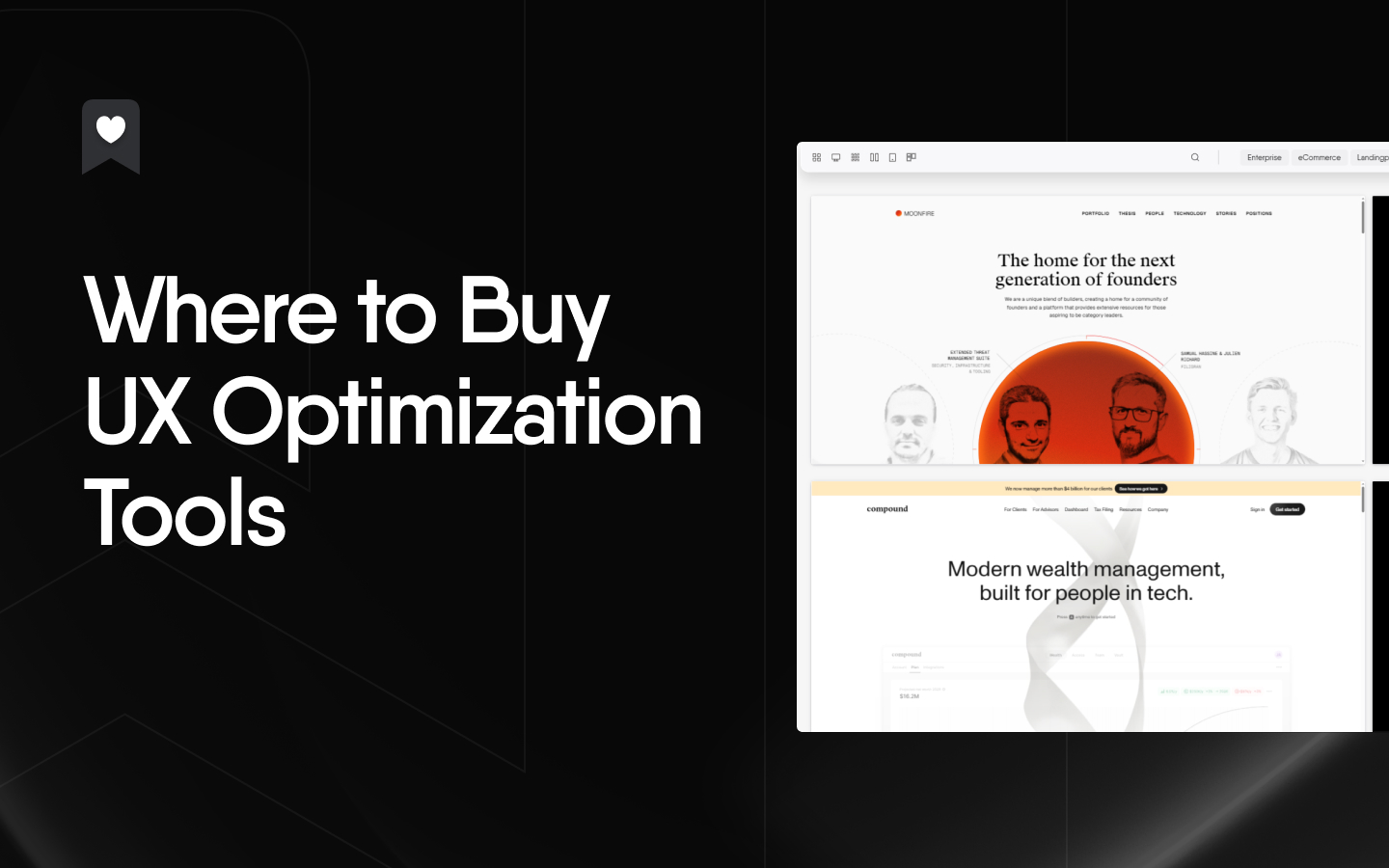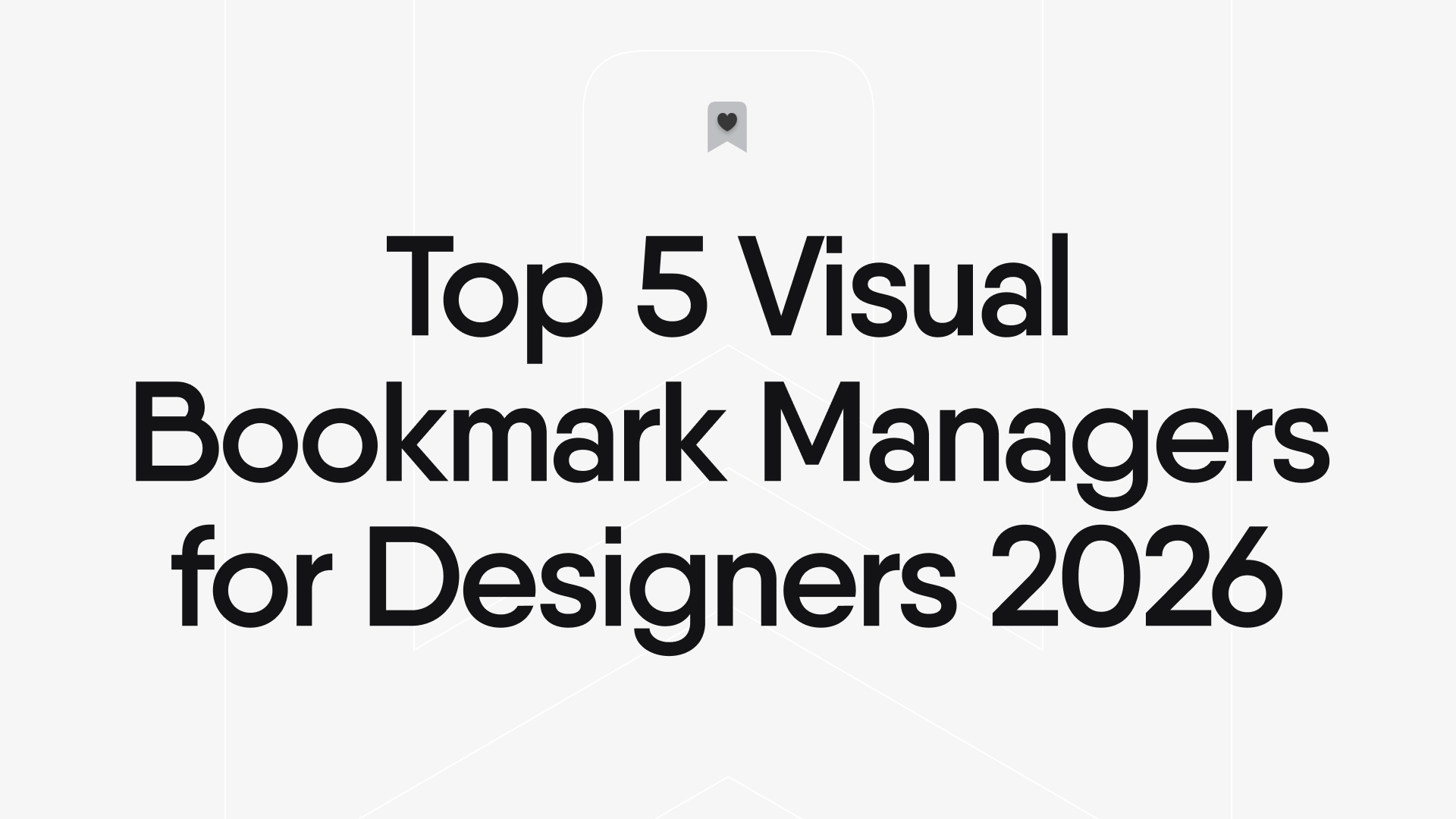If you're a creative, you know the feeling. You have 42 open tabs, a desktop littered with screenshots, and a vague memory of that one perfect reference you saw last week. This isn't a sign of failure; it's the natural byproduct of a curious mind. But let's be honest, that digital mess comes with a cost. It creates friction, slows down your process, and leads to that sinking feeling when you can't find the exact idea you need for a client presentation. This guide will show you how to organize design inspiration effectively, turning that chaos into your personal, searchable idea engine. Ready to build your creative superpower? Let's get started.
Ending the Creative Chaos of Digital Clutter
We’ve all been there. A project kicks off, and the hunt for inspiration begins. You dive into websites, collect images, and save links, but soon your digital workspace resembles a creative explosion. This disorganization isn't just messy; it's a bottleneck. Every minute spent searching for a lost reference is a minute not spent designing. The frustration of knowing you have the perfect example but can't find it can stall momentum right when you need it most.
Effective design inspiration management isn't about restricting your creativity. It's about channeling it. When you have a system, you spend less time managing clutter and more time connecting ideas. Imagine being able to pull up every example of minimalist e-commerce checkouts you've ever saved in seconds. That’s not just organization; it’s a strategic advantage.
By reframing organization from a chore into an essential part of your creative process, you build a powerful asset. Your inspiration library becomes a reliable partner that fuels your work instead of hindering it. The following sections provide a clear, step-by-step system to achieve exactly that.
Building Your Foundation: Folders vs. Tags

The first step in your creative workflow organization is choosing your foundational structure. Think of folders as a traditional filing cabinet: structured, hierarchical, and familiar. You create a drawer for "Client Projects," then a folder inside for "Project Phoenix." It’s clean and logical, but an item can only live in one place. What if a reference for Project Phoenix is also a great example of brutalist typography for your personal swipe file? That's where folders can feel rigid.
Tags, on the other hand, are like a web of interconnected sticky notes. They are flexible and multi-dimensional, allowing a single bookmark to exist in multiple contexts. That same reference can be tagged with #project-phoenix, #brutalism, and #typography. This makes searching across different ideas incredibly powerful. The main challenge with tags is that they require discipline. Without a consistent strategy, you can end up with a chaotic cloud of meaningless labels.
So, which is better? The most effective system is often a hybrid. Use folders for broad, distinct categories like "Web Design Patterns," "Client Work," or "Mobile Apps." Then, use tags to add granular, searchable details like #dark-mode, #serif-fonts, or #onboarding-flow. This gives you the best of both worlds: the clear structure of folders and the flexible discoverability of tags. To learn more about refining your process, you can explore more strategies on our blog.
| Factor |
Folder-Based System |
Tag-Based System |
| Structure |
Hierarchical and rigid |
Flat and flexible |
| Discoverability |
Good for browsing known categories |
Excellent for searching across categories |
| Context |
An item exists in one single context |
An item can have multiple contexts |
| Best For |
Distinct projects, linear workflows |
Complex research, mood boards, intersecting ideas |
| Mental Overhead |
Easy to start, hard to maintain at scale |
Requires initial discipline, scales well |
This table summarizes the core trade-offs between folders and tags. The most effective creative workflow organization often combines the structure of folders with the flexibility of tags.
Mastering a Tagging System That Works for You
Once you have your foundational folders, it's time to get tactical with tags. A good tagging system is the key to unlocking your library's true potential, making visual bookmarking for designers fast and intuitive. Instead of creating tags on the fly, start with a clear framework.
How to Organize Design Inspiration with a Multi-Level Strategy
A multi-level approach brings order to your tags. Think of it in tiers:
- Level 1: High-Level Type. What is it? Use broad categories like
#website, #app, #icon, or #article.
- Level 2: Project or Theme. What is it for? This could be a specific project like
#client-x-moodboard or a general theme like #portfolio-ideas.
- Level 3: Granular Descriptors. What are its features? This is where you get specific with tags like
#brutalist-typography, #gradient-background, or #3d-illustration.
With this structure, you can instantly filter your library with precision. A search for #website + #ecommerce + #minimalist will immediately show you every minimalist e-commerce site you've ever saved.
Tagging Best Practices: The Do's and Don'ts
Consistency is everything. Here are a few rules to keep your system clean:
- Do use lowercase for all tags to avoid duplicates (e.g., #Web vs. #web).
- Do use hyphens for multi-word tags (e.g.,
#dark-mode, not #dark mode).
- Don't use singular and plural versions of the same tag (pick one, like
#icon, not #icons).
- Do conduct a quick "tag audit" every few months to merge duplicates and clean up unused tags.
A disciplined system transforms how you save design ideas. It becomes a powerful, searchable database, and tools like Bookmarkify make this filtering process feel effortless.
Thinking Visually with Mood Boards and Curated Layouts

Organization isn't just about lists and labels. As a creative, context is king. Seeing your inspiration together on a mood board is fundamentally different from scrolling through a list of links. A mood board helps establish a project's visual tone, align your team, and get client buy-in before a single pixel is pushed. It’s one of the most effective mood board organization tips to put into practice.
But visual organization goes beyond the traditional mood board. The ability to view your saved content in different layouts is a huge advantage. A grid view is perfect for quickly comparing UI patterns across multiple websites. A mobile preview is essential for analyzing responsive design choices. This is where your library becomes an active analysis tool, not just a passive storage space.
Picture this: you're starting a new mobile app project. Instead of digging through a folder of random screenshots, you pull up a collection you've built. You tag everything with #onboarding-flow and instantly switch to a mobile view. Now you can scroll through a dozen real-world examples, seeing how the user experience feels across each one. This is the power of visual organization in action. You can see how this works with curated collections of design inspiration that showcase different layouts.
Integrating an Inspiration Catcher into Your Workflow
The best organizational system is one you actually use, and that only happens when the process is frictionless. The moment of capture is critical. If it takes more than a few clicks to save design ideas, you're less likely to do it. An effective "inspiration catcher" should integrate seamlessly into your daily workflow.
What makes a great inspiration-catching tool? Look for these key features:
- A one-click browser extension: Save inspiration without ever leaving the page you're on.
- In-context tagging: Add tags the moment you save something, while the idea is still fresh.
- Multiple view modes: The ability to instantly see your bookmarks as a grid, list, or mood board.
- Fast and searchable: Find anything you've saved in seconds with robust filtering.
Organization should be a habit, not a project. Take 10 seconds to save and tag inspiration the moment you find it. This small upfront investment pays off exponentially later. A tool that offers both free and pro plans can be the bridge that connects all these concepts, turning the desire to get organized from a chore into a reflex.
Sharing and Collaborating on Creative Ideas

Creative work is rarely a solo act. But sharing inspiration can be clumsy. We've all received messy Slack threads with a dozen links or a zip file of unorganized images. It's inefficient and doesn't present your vision professionally. A streamlined approach to creative workflow organization extends to how you share your ideas.
Imagine sending a client or teammate a single, beautifully curated link. They click it and see a polished mood board that perfectly captures the project's direction, with no login required. This is the power of sharing a collection via a unique URL. It’s clean, professional, and keeps everyone on the same page. For a constant stream of new concepts to share, you can tap into a daily dose of curated design resources.
For larger project assets that go beyond inspiration links, teams can upload and share your files securely using dedicated cloud services. By building a structured, visual, and shareable inspiration library, you're not just getting organized—you're building a powerful asset for your creative career. Start building yours today and see what new ideas you can bring to life.













